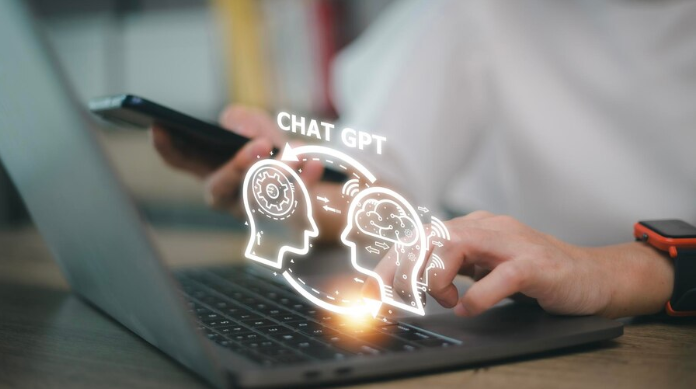Using ChatGPT for Language Translation: A Multilingual Guide

Introduction to ChatGPT for Language Translation
ChatGPT is a language model trained on extensive internet text data using the Generative Pre-trained Transformer (GPT) architecture. It excels in translating text between languages by leveraging its neural network to understand context and semantics, ensuring accurate translations through deep learning. ChatGPT’s effectiveness is enhanced by extensive multilingual training data, enabling it to capture language nuances and idiomatic expressions while handling long-range dependencies in language for coherent and accurate translations
How ChatGPT Performs Language Translation:
1. Input Processing:
ChatGPT encodes text inputs into numerical embeddings, capturing semantic and syntactic features.
2. Language Understanding:
Through transformer layers, ChatGPT analyzes input text to comprehend context, structure, and meaning.
3. Translation Generation:
ChatGPT decodes processed information into coherent translations, guided by learned language patterns.
4. Contextual Adaptation:
Translations are contextually adapted for fluency and coherence, considering input cues for accurate conveyance of meaning.
Strengths and Limitations of ChatGPT in Translation Tasks
Strengths:
1. Multilingual Capabilities:
ChatGPT supports diverse languages and language pairs for seamless translation across different contexts.
2. Contextual Understanding:
ChatGPT captures context and semantics accurately, preserving the original meaning in translations.
3. Continuous Learning:
ChatGPT’s neural network is continually updated with new data, improving its adaptation to evolving language patterns and translation quality over time.
4. Versatility:
ChatGPT handles various text types, from informal to formal language, making it suitable for a wide range of translation tasks.
Limitations:
1. Domain Specificity:
ChatGPT’s accuracy may be lower in specialized or technical domains with specific terminology and jargon.
2. Cultural Nuances:
ChatGPT may struggle with unique cultural nuances and idiomatic expressions in certain languages or regions.
3. Ambiguity Handling:
ChatGPT faces challenges with ambiguous phrases or polysemous words that have context-dependent meanings.
4. Training Data Bias:
Translation quality can be affected by the diversity and representativeness of training data, potentially introducing biases in certain language pairs.
Accessing ChatGPT for Translation: Platforms and Tools
1. OpenAI API:
Use the OpenAI API directly to integrate ChatGPT into applications for translation tasks.
2. Online Platforms:
Access ChatGPT-based translation services through user-friendly online platforms.
3. Integrated Software:
Incorporate ChatGPT into software applications like communication platforms or productivity tools for real-time translation.
Setting Up and Configuring ChatGPT for Translation Tasks
To set up and configure ChatGPT for translation tasks effectively, follow these steps:
1. Obtain API Access:
If using the OpenAI API, developers need to obtain access credentials such as API keys or tokens. This typically involves signing up for an OpenAI account and subscribing to the appropriate API plan.
2. Select Language Pairs:
Determine the source and target languages for translation. ChatGPT supports a wide range of language pairs, including common combinations like English-Spanish, English-French, etc.
3. Input Text for Translation:
Prepare the text you wish to translate. Ensure that the input text is in the source language specified for translation.
4. Invoke Translation Endpoint:
Utilize the appropriate API endpoint or user interface to invoke ChatGPT’s translation functionality. Pass the input text along with the desired source and target languages as parameters.
5. Receive Translated Output:
ChatGPT will process the input text and generate a translated output in the specified target language. The translated text can then be retrieved and utilized as needed.
Tips for Effective Configuration and Usage
1. API Documentation:
Consult the official API documentation provided by OpenAI for detailed instructions on how to use ChatGPT for translation tasks.
2. Language Model Selection:
Depending on your translation requirements (e.g., accuracy, speed), consider selecting the appropriate ChatGPT model variant (e.g., GPT-3, GPT-4) and fine-tuning parameters.
3. Error Handling:
Implement robust error handling mechanisms to manage potential issues such as network errors, rate limits, or unexpected API responses during translation requests
Tips for Maximizing Accuracy and Fluency in Translations
- Use concise, grammatically correct sentences to improve translation accuracy. Avoid ambiguity or complexity.
- Clarify the intended meaning with additional context, enhancing ChatGPT’s contextual understanding.
- Review and edit ChatGPT’s translations to correct errors and improve quality.
- Adjust language settings to fine-tune translation parameters for better performance.
- Adapt translations for cultural differences and idiomatic expressions to convey accurate messages.
- Continuously provide feedback to refine ChatGPT’s language model and improve over time.
- Explore ChatGPT’s capabilities for specific domains and technical terminology to tailor translations effectively.
Languages Supported by ChatGPT
ChatGPT offers robust multilingual capabilities for translation tasks, supporting major languages such as English, Spanish, French, German, Chinese (Simplified and Traditional), Japanese, Korean, Italian, Portuguese, Russian, Arabic, and more. It covers diverse language families including Indo-European (e.g., English, Spanish, French), Sino-Tibetan (e.g., Chinese), Japonic (e.g., Japanese), Koreanic (e.g., Korean), Afro-Asiatic (e.g., Arabic), and others, aiming for comprehensive global coverage.
Language Pairs and Translation Quality
ChatGPT facilitates translation between various language pairs including English to Spanish, French, German, Chinese (Simplified and Traditional), as well as Spanish to French, Portuguese, and more. Translation quality is generally high for well-represented language pairs with abundant training data. However, for less common or low-resource languages, translation quality may vary due to limited training data and linguistic diversity. OpenAI continuously works to expand language support and improve translation accuracy across all supported language pairs.
Using ChatGPT for Specific Translation Needs
1. Technical:
a. Contextual Understanding:
ChatGPT comprehends technical context for accurate terminology translation.
b. Accuracy and Precision:
ChatGPT ensures clarity and fidelity in translating technical jargon.
c. Training Data:
Fine-tuning with relevant technical datasets enhances performance.
2. Creative Writing:
a. Maintaining Style and Tone:
ChatGPT preserves the author’s voice and style in translated creative works.
b. Adapting Figurative Language:
ChatGPT interprets metaphors and literary devices for nuanced translations.
c. Cultural Sensitivity:
ChatGPT adjusts translations to respect cultural nuances, enhancing authenticity.
Handling Idiomatic Expressions and Cultural Nuances with ChatGPT
1. Idiomatic Expressions:
a. Contextual Interpretation:
ChatGPT understands idioms based on surrounding text, ensuring accurate translations.
b. Semantic Equivalence:
ChatGPT maintains the original impact of idioms by generating equivalent expressions in the target language.
2. Cultural Nuances:
a. Sensitivity to Cultural Context:
ChatGPT aligns translations with cultural norms, customs, and societal references.
b. Content Localization:
ChatGPT considers cultural preferences and sensitivities for culturally appropriate translations.
Optimizing Translation Quality with ChatGPT
1. Fine-tuning Models:
Customize ChatGPT with domain-specific data to improve translation accuracy for technical or creative content.
2. Post-Editing and Review:
Refine nuances, correct errors, and ensure linguistic integrity by conducting post-editing and review of translated text.
3. Feedback and Iteration:
Contribute to ongoing improvements in ChatGPT’s language capabilities by providing feedback to OpenAI on translation outcomes.
Ethical and Privacy Considerations
1. Data Privacy:
- Review OpenAI’s privacy policies and encrypt sensitive data before using ChatGPT.
- Obtain explicit user consent and implement data retention policies.
2. Ethical Use of AI:
- Mitigate biases by using diverse training data and promote cultural sensitivity in translations.
- Enhance transparency with explainable AI and ethics frameworks.
3. Best Practices for Ethical Translation:
- Educate users on AI-driven translation’s ethical implications.
- Continuously monitor ChatGPT’s performance and establish ethics review boards for sensitive contexts.
Best Practices for Translation Quality with ChatGPT
1. Input Clarity:
- Use clear, concise sentences to improve translation accuracy.
- Avoid complex or ambiguous phrases to prevent errors.
2. Contextual Guidance:
- Provide relevant context and explanations for accurate translations.
- Specify meanings of idiomatic or culturally specific phrases.
3. Domain-Specific Customization:
- Fine-tune ChatGPT with domain-specific data for technical tasks.
- Collaborate with human translators to refine ChatGPT translations.
Addressing Translation Challenges
1. Simplify Language
- Break down complex sentences into simpler structures to aid ChatGPT in accurate translation.
- Use straightforward language and avoid intricate expressions to enhance translation quality.
2. Cultural and Idiomatic Awareness:
- Enhance ChatGPT’s cultural understanding by exposing it to diverse training data and context-specific information.
- Provide feedback to OpenAI on translation quality to contribute to ongoing improvements in ChatGPT’s language capabilities.
Additional Resources for Learning with ChatGPT
1. Language Learning Platforms:
Duolingo: Use ChatGPT for translation and conversation practice.
Rosetta Stone: Integrate ChatGPT translations for interactive lessons.
2. Online Courses and Tutorials:
Coursera: Enroll in ChatGPT language translation courses.
Udemy: Explore ChatGPT tutorials for language learning.
3. Interactive Language Apps:
HelloTalk: Practice with ChatGPT-assisted conversations.
Tandem: Connect for language exchanges with ChatGPT translations.
4. Textbook Supplements:
Integrate ChatGPT translations into language workbooks for reinforcement.
In conclusion, ChatGPT stands out as a powerful tool for language translation, leveraging advanced neural network capabilities to ensure accurate and contextually meaningful conversions between languages. By tapping into a wide array of community resources and language learning platforms, users can further enhance their language proficiency and cultural understanding, making ChatGPT a valuable asset in the realm of AI-driven language learning and communication.
To know more language translation tools, explore www.intogeeks.com.




